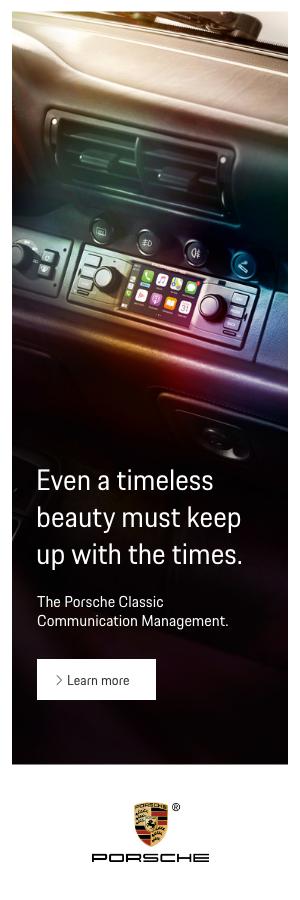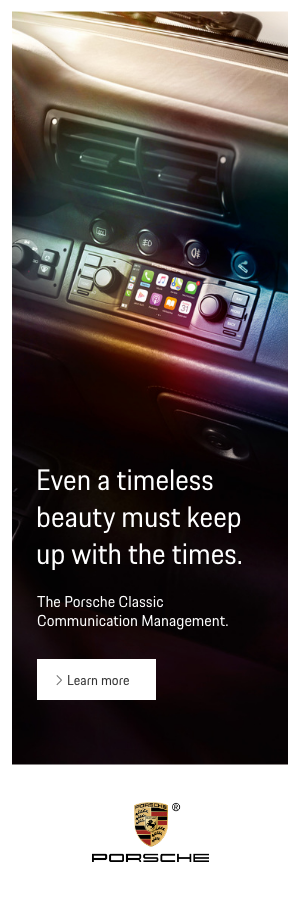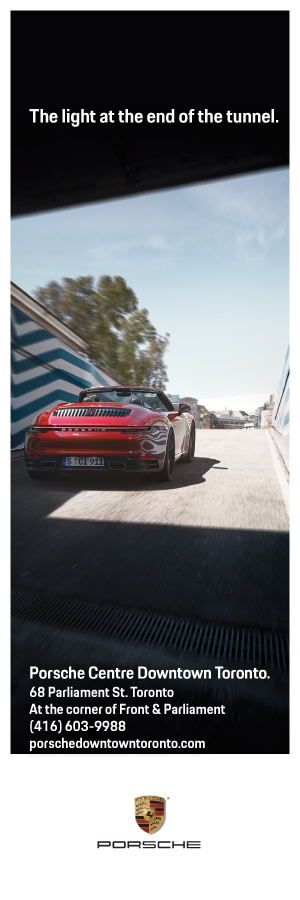IT IS ONCE MORE THAT TIME OF YEAR for most of us to consider the storage of our Porsche. The moment we place our cars into storage, the greater they are at risk to what I call “storage nightmares.” More than other Porsches, the classics are more susceptible to these issues. Rats, mice and other little bastards are all on the search for a place of warmth and protection away from the cold with a good supply of food not too far out of reach. I can say with confidence that they enjoy chewing on a vehicle’s wire harnesses, body seals, even the hard plastics, carpets and other sound-deadening material. I have seen it all.
The problem these delightful creatures do in reality can cause major issues and generally wreak havoc on a car’s “edible” products. These issues are not limited to mechanical, as they can create a myriad of other seriously dangerous problems. Depending on where they are hiding in the vehicle, the damage they cause can eventually lead to a fire, which would be the worst possible outcome. Houses have burnt down due to these creatures. From the moment we remove our cars from storage after the moderately long winter hiatus, mostly from November to the end of April, things can start to go south very quickly. One may be, in most cases, totally unaware that anything is wrong until it is too late. These uninvited visitors bring anything they can find in and around a storage facility or a nice selection of insulation products from the walls of a home. I found a ping-pong ball in an engine but how they can get something of that size into the heat shield is somewhat bizarre.
A gentleman earlier this year, before COVID-19 settled in and disrupted things, sent me his 1988 911 Carrera as he had been having overheating issues for quite awhile. The customer himself tried everything to locate the source of the overheating glitch. After talking to him in detail I became very concerned that the engine could already be damaged as by this time the motor was already chugging smoke and I was informed it had been doing so for awhile. It was only after the engine was removed and partially dismantled that the cause was revealed. The engine overheated just too many times and regrettably it now necessitates a full engine rebuild and I can guarantee he will be in need of new pistons and cylinders. The cost of six new pistons and cylinders ranges from $6,000 to $8,000 depending on the size. Yes, you read that correctly. I just purchased a new set of cylinders from the same company, they alone cost $6,000 undelivered, no pistons, no rings, nothing but the six cylinders.
These sneaky gremlins can be found under the intake manifolds, in the shrouding of the water radiator and in the heating tubes particularly in air-cooled engines. More of this pink insulating material was found inside this engine completely covering cylinders four, five and six. The rest was jammed directly over the engine-mounted oil cooler totally stopping air generated by the engine cooling fan, therefore the fan could no longer do its job. The engine climbed to over 230 degrees within a few minutes of running. If an engine quickly increases in temperature, do not continue driving it, stop immediately and get the Porsche to a mechanic to investigate. The quickest way to check is to remove the air fan on the alternator and look inside with a flashlight, it is the only way to be 100-percent sure that nothing has been hiding over the cylinders. Alternatively, buy a good-quality bore scope, this will help in a search and, not to mention, is a useful tool for a myriad of other jobs you may have down the road.
Porsche 944s, 968s and 928s are all susceptible to these issues as well. A place to be checking is all the surrounds covering the front, underneath the intake manifolds, and any other place where you may notice a possible breach. Remember these critters are contortionists and can fit in just about every area of a car. Remove the air-filter housing and check as I have seen 944s and 928s with corn stuffed in so tight that the engine could no longer start as it was receiving zero air through the air filter.
Before it is finally time to put a Porsche away, I strongly recommend to close all interior air vents, more so on the 911s because the heating system starts at the engine and travels along both sides under the door sills. Through this routing they have access to the cabin. I also strongly recommend closing the rear heater boxes on the 911s, controlled by the red lever between the front seats. If the electronic unit doesn’t work, manually close the valves by pushing the lever all the way down to the floor.
I have experienced Porsches that rodents were able to get into the centre tunnel as it can be an easy access point for them particularly once an engine has been removed. There are a lot of electrical cables running through the centre, so there are many places you must check. They eat the outer casing of the wires and sometimes, with a bit of luck, they get electrocuted. I have removed carcasses from these areas more times than I care to remember as the battery voltage and the higher amps are enough to fry them.
In the ‘70s, ‘80s and ‘90s when I had a Porsche shop in Hong Kong, shop space was and still is at a premium and so I had to store cars off-site while doing engines and other long-term work such as transmissions. Waiting to get parts from Porsche in those days took weeks if not months, the same is true to this day, that problem still exists. The 911 I placed in storage for over a year while waiting for parts was now ready to be brought back to the shop and was ready for the drive-train installation. I had the car towed back to the shop and I installed the complete drive-train unit. As soon as the battery was connected, I noticed smoke clearly rising from under the shifter and hand-brake lever. If I had not reacted quickly enough by disconnecting the battery, a fire would have most definitely ignited. The damage caused by these rodents was so bad that it necessitated the removal of the entire wire harness. Try explaining that one to a Porsche owner, let alone getting him to pay for it. In this case my shop’s insurance company paid for the repair.
To avoid these nasties from happening to you make sure you block off what you can. Close off all the flapper valves, leave the HVAC to recycle mode as this will help by blocking the entrance leading back to the interior. The accompanying photos show clearly that they eat anything so be diligent and keep a look out for any other plastics that may have teeth marks on them, report it quickly to your shop and get them to investigate.
Because these situations can become so bad, I recommend any person wishing to purchase a classic Porsche, particularly a 911, have it checked out thoroughly and, although some owners might not like you removing the fan, it is the only way to be sure that the engine is clear of these issues. As mentioned previously, the bore scope can be a valuable tool for exactly this reason. Always remember that this problem can cost a lot of money and we all know how much these cars cost under normal conditions. Always be aware and your Porsche will be free of these issues.
Classics should be cared for more than others and this is one point I can not stress strongly enough. These conditions can really ruin your favourite Porsche classic and quite possibly your home. </>
















